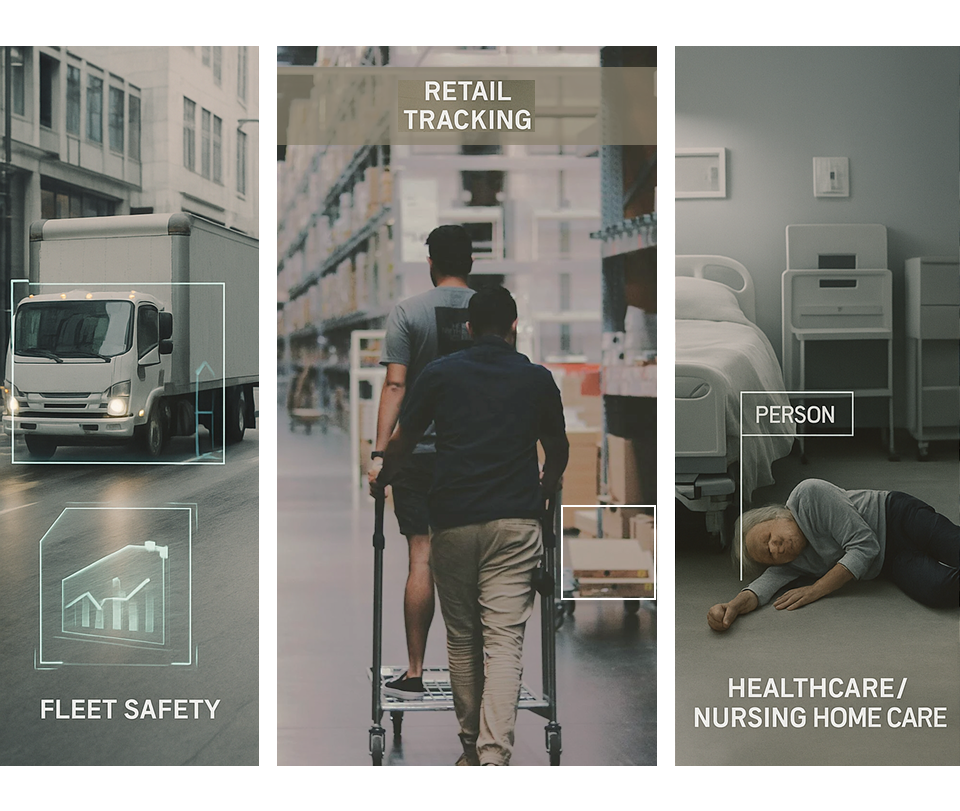Video Surveillance in the Age of AI-Driven Intelligence
Written byDivya Sudhakar

Artificial intelligence has made an impact on various industries, and video surveillance is no exception. Video surveillance has evolved from analog cameras to sophisticated gen AI-driven systems that can analyze, interpret, and even predict behaviors in real-time. This shift in technology has opened up new possibilities for many industries. These systems are now powerful enough to analyze live feeds and respond instantly to situations, enabling use cases within everything from retail to public safety to healthcare.
Video surveillance began with analog CCTV (Closed-Circuit Television) cameras. These systems were primarily used for monitoring, but their capabilities were limited. Cameras captured footage and transmitted it to a central location for monitoring. Personnel would watch feeds on monitors looking for specific activities. While useful, the system had its flaws—human operators couldn’t monitor every camera simultaneously, and there was no way to automatically flag or analyze specific events within the footage.
As technology advanced, video analytics became possible. Basic AI algorithms were capable of motion detection and object tracking. This technology could identify changes in a camera’s field of view and send alerts based on that activity. However, they often generated false alarms or failed to detect relevant objects. With the rise of machine learning, these systems began to improve. Machine learning algorithms trained on vast amounts of data could identify and track objects more accurately. Generative AI has further advanced video surveillance, using more sophisticated algorithms that can better analyze video. This is primarily driven by the following capabilities:
- Real-Time Processing
Generative AI models provide faster inference. That, along with hardware advancements, has led to an improvement in real-time processing. As a result, we’re seeing that today’s systems can process live video streams in real-time without relying on human operators to spot anomalies. The models can then send immediate alerts, allowing teams to respond faster and more effectively. - Improved Accuracy
Generative models learn meaningful data features, where they can identify patterns, structures, and relationships within the training data. By internalizing these sometimes subtle patterns, the models can make more accurate predictions. These models can also use few-shot learning, allowing them to perform accurately even with limited data by generating relevant new data points. As a result, we are seeing that AI models can now detect people and vehicles with high accuracy, even in challenging conditions such as low lighting or crowded environments. These systems can distinguish between different types of objects, making it possible to focus on specific issues. Additionally, AI’s ability to continuously improve with time and data ensures that detection rates become more precise, minimizing false alarms. - Predictive Analytics and AI at the Edge
AI is also becoming more proactive, moving from reactive alerts to predictive surveillance. Predictive analytics uses historical data and machine learning models to forecast potential actions before they happen. Generative AI models are better at making predictions because they are good at probabilistic forecasting, predicting a range of possible outcomes versus being deterministic, like the previous generation of models. AI at the edge, where data is processed locally on devices rather than sent to centralized servers, ensures faster decision-making, lower latency and enhanced privacy. This combination of generative AI-powered prediction and processing at the edge means video systems can be smarter and more autonomous.
Interesting Use Cases of AI in Video Surveillance
The impact of AI in video surveillance isn’t limited to traditional security applications. These systems are making a difference in a wide range of sectors. While the technology has existed in many of these sectors for a number of years, the capabilities of AI-based video surveillance has increased the utilization and acceptance of the technology. Below are some areas where we are seeing a sizeable impact:
- Fleet Safety: AI can analyze footage from cameras installed on commercial vehicles to monitor driver behavior. By detecting distractions, fatigue, or unsafe driving patterns, fleets can take corrective actions and improve safety standards. Companies such as Netradyne* have been at the forefront of using their edge-based devices to reduce accident rates and insurance claims.
- Public Safety: AI-driven systems are becoming commonplace in city streets, public transportation hubs, airports, helping detect suspicious activities, crowd anomalies, and potential threats. This helps prevent incidents before they escalate. We see many companies tackling this area through video devices placed at public locations, vehicles, etc., including Flock Safety, Verkada and LiveView Technologies.
- Healthcare/Nursing Home Care: In healthcare, AI-powered surveillance can monitor those being treated, providing insights into their health and safety. Systems can detect falls or unusual behavior, alerting caregivers to potential emergencies. For instance, we are seeing companies like Safely You improving resident outcomes at nursing homes with their camera-based technology.
- Retail Tracking: AI video analytics can help retailers monitor customer behavior, track product movements, and prevent theft. It can also be used for inventory management, ensuring shelves are stocked and products are appropriately displayed. Companies such as Spot AI, Radar help retail locations optimize customer experiences and improve margins.
Artificial intelligence has revolutionized video surveillance. From its beginnings with CCTV to the sophisticated AI-powered systems of today, video surveillance is becoming an active, intelligent, and predictive system capable of enhancing security and operational efficiency. We are excited about the potential impact of video surveillance across various industries. If you are building in this category, please reach out as we’d love to meet you!
———
*Denotes Geodesic portfolio company

